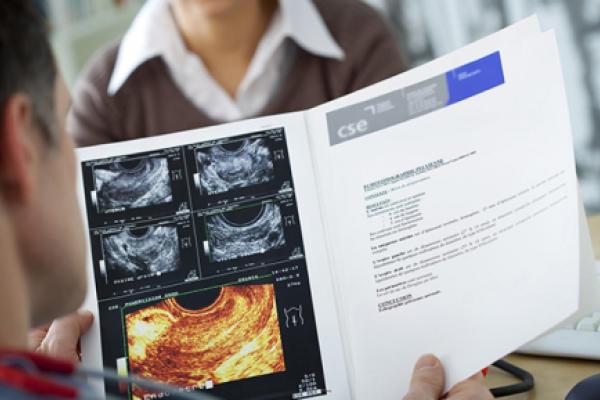Laparoscopic surgery, which is also defined as closed surgery, is also used extensively in gynecological diseases. The Gynecology and Obstetrics Specialist said that closed surgeries are also preferred by patients because they have more advantages compared to open surgeries and provide comfort for the patient.
Closed methods are frequently used in the diagnosis and treatment of many problems, from myomas, which are quite common among women, to cancers of the female reproductive organs, from ovarian cysts to infertility treatment. Moreover, the fact that these procedures have more advantages makes closed surgeries the reason for preference in the treatment of problems that require surgery.
According to the information given by Yeditepe University Kozyatağı Hospital Gynecology and Obstetrics Specialist, endoscopic surgeries in women are generally divided into two: laparoscopy and hysteroscopy. In laparoscopy, surgery is performed by observing the inside of the abdomen with the help of a camera inserted through the navel, with the help of 2 or 3 holes of 1 cm from the navel and 0.5 cm from the lower abdomen, without large incisions in the abdomen of the patient.
Laparoscopy is the First Option for Many Surgeries
Our specialist made the following explanations about the areas where laparoscopy can be applied: “Laparoscopy comes to the fore in the treatment of chronic abdominal pain as well as opening or ligating the tubes that carry eggs from the female reproductive organs (fallopian tubes), removal of ovarian cysts (ovarian cyst surgeries), and ectopic pregnancy. In addition, endoscopic methods are the first choice for the treatment of female infertility, for the removal of chocolate cysts and endometriosis nodules in chocolate cyst disease (endometriosis). Removal of uterine myomas, which are benign tumors of the uterus, or removal of the uterus and ovaries, surgeries for the prolapse of the uterus, bladder, and rectum, which we call pelvic organ prolapse, from the vagina, and stress urinary incontinence surgeries can be performed safely and successfully with closed techniques. Endoscopic methods are now the first choice in female reproductive organ cancer surgeries, which is the extreme point of this business.”
Stating, “With laparoscopy, most of the operations performed by opening the abdomen can now be performed, for which laparoscopy is a much preferred less risky method”, our specialist added, “The advantages of this method are that the incisions on the skin are much smaller. Major surgeries, including cancer and uterus removal, can be performed through small holes.” Stating that although there was a belief in the past that a great surgeon would make a large incision, today this perception has been reversed, our specialist said that it is possible to do great jobs with small incisions as a result of special training. Our specialist, who stated that the size of the operation performed in endoscopic surgeries is the same as in open surgeries, emphasized the importance of the benefits for the patient: “After this procedure, the patient feels less pain, stays in the hospital for a shorter time, returns to work earlier, and it is very advantageous in terms of aesthetic appearance. With each passing day, thanks to the developments in the field of technology, telescopes that can be bent and smaller in diameter have started to be used in endoscopic surgeries, which has allowed performing surgeries almost without anesthesia.”
Hysteroscopy is Used for Both Diagnosis and Treatment
Hysteroscopy is the evaluation of the inside of the uterus and the part of the tubes called the ostium that opens to the uterus by entering through the cervix with a millimeter-thick, thin optical system mounted on the camera system for diagnostic or therapeutic purposes. During this procedure, both diagnosis (diagnostic hysteroscopy) and treatment (operative hysteroscopy) of intrauterine anomalies can be performed. The physician decides whether to perform open or closed surgery according to the patient's needs. Informing that laparoscopy and hysteroscopy can be performed on anyone whose general condition is suitable for the operation, our specialist said: “Laparoscopy may not be preferred for those with respiratory or heart problems that interfere with the procedure, since the upside-down position is used during the procedure. Closed surgeries are not preferred in women with diaphragm and hernia problems, very large and multiple myomas, and ovarian cancer.”

Faster Recovery
Emphasizing once again that the recovery in closed surgeries can be faster than in open surgeries, Yeditepe University Hospital Gynecology and Obstetrics Specialist stated that they take the patient to his/her room after he/she is kept under observation until the effect of the anesthesia wears off after the surgery is over, and continued to state, “Nothing is given orally for about 4-6 hours and serum treatment is applied. It is appropriate to have a catheter in the urinary tract for 4-6 hours until the patient can stand up. The patient usually stays in the hospital for 1 or sometimes 2 days.”
Timing is Important in Endoscopic Surgeries
Emphasizing that timing is absolutely important when endoscopic surgeries are planned, our specialist said, “If our patient is of childbearing age, the most appropriate time for the procedure is the period immediately after the patient's menstrual period and before the time of ovulation. Timing is very important for the appropriate imaging, especially in patients who will undergo hysteroscopy. The procedure can be performed at any time in patients who have stopped menstruating.”

